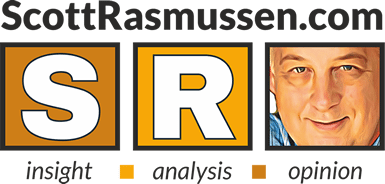Forty-one percent (41%) of voters believe that the worst of the pandemic is behind us. A Scott Rasmussen national survey found that 32% disagree and believe the worst is yet to come.
Those figures are little changed from six weeks ago. That suggests the recent trend of growing confidence has stalled.
Prior to the past six weeks, confidence was growing rapidly. As recently as late November, 68% believed that the worst was still to come. At that time, only 18% believed the worst was behind us.
However, following the arrival of COVID-19 vaccines, confidence surged. By late January, 33% of voters believed the worst of the pandemic was behind us, while 40% believed the worst was still to come. Then, in mid-February, for the first time ever, a plurality of voters believed that the worst was behind us. At that point, 39% took the optimistic view while 31% gave a more pessimistic answer. By early March, the number believing the worst was behind us inched up to 42%. That’s the highest level of confidence yet measured and a point higher than the latest numbers.
Throughout the pandemic, there has been a vast partisan perception gap. That remains the case today. By a 50% to 27% margin, Republicans believe the worst is behind us. By a narrow plurality (37% to 31%), Independents tend to agree. Democrats are evenly divided. Thirty-seven percent (37%) of those in President Biden’s party believe the worst is behind us while 36% believe it is yet to come.
SIGN UP to receive Scott’s free email newsletter.
CHECK OUT Scott’s latest polls.
Note: Neither Scott Rasmussen, ScottRasmussen.com, nor RMG Research, Inc. have any affiliation with Rasmussen Reports. While Scott Rasmussen founded that firm, he left more than seven years ago and has had no involvement since that time.
Methodology
The survey of 1,200 Registered Voters was conducted by Scott Rasmussen using a mixed mode approach from April 15-17, 2021. Field work for the survey was conducted by RMG Research, Inc. Most respondents were contacted online or via text while 261 were contacted using automated phone polling techniques. Online respondents were selected from a list of Registered Voters and through a process of Random Digital Engagement. Certain quotas were applied, and the sample was lightly weighted by geography, gender, age, race, education, internet usage, and political party to reasonably reflect the nation’s population of Registered Voters. Other variables were reviewed to ensure that the final sample is representative of that population.


